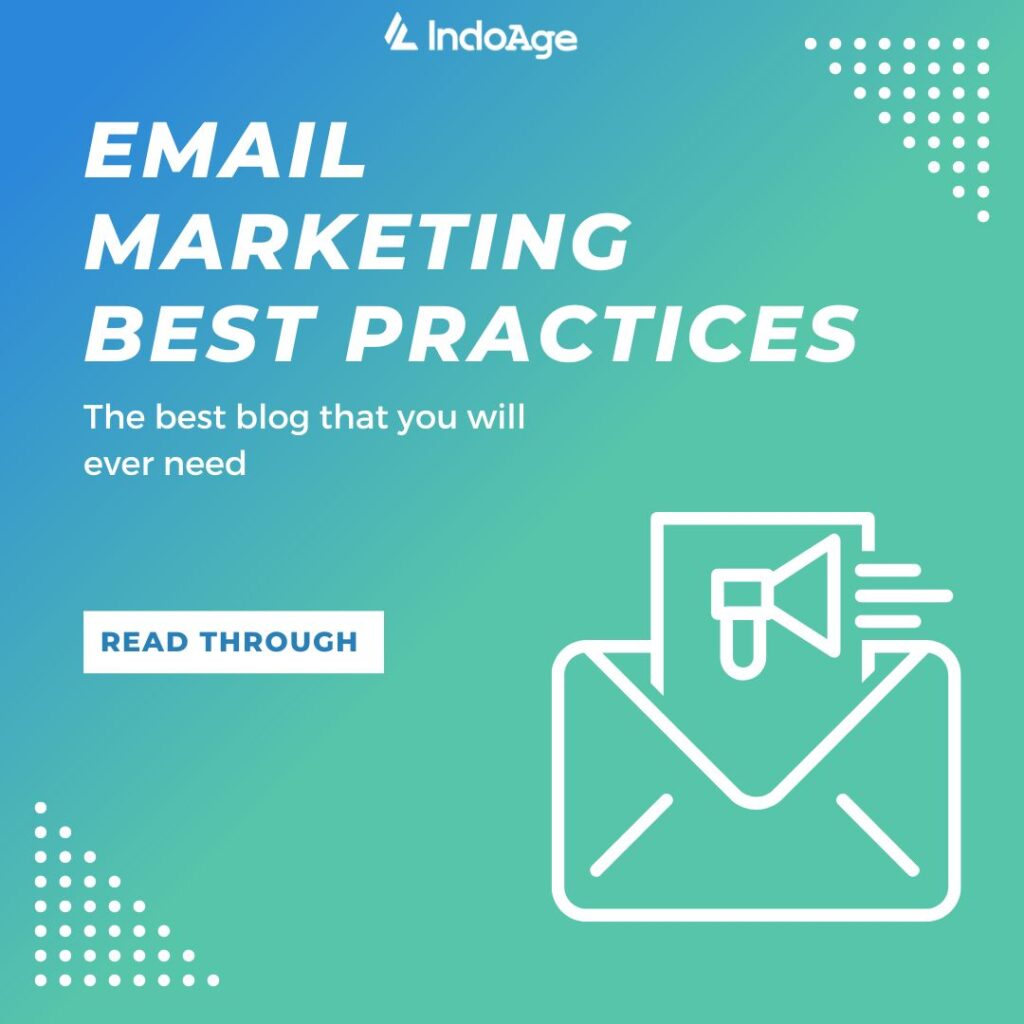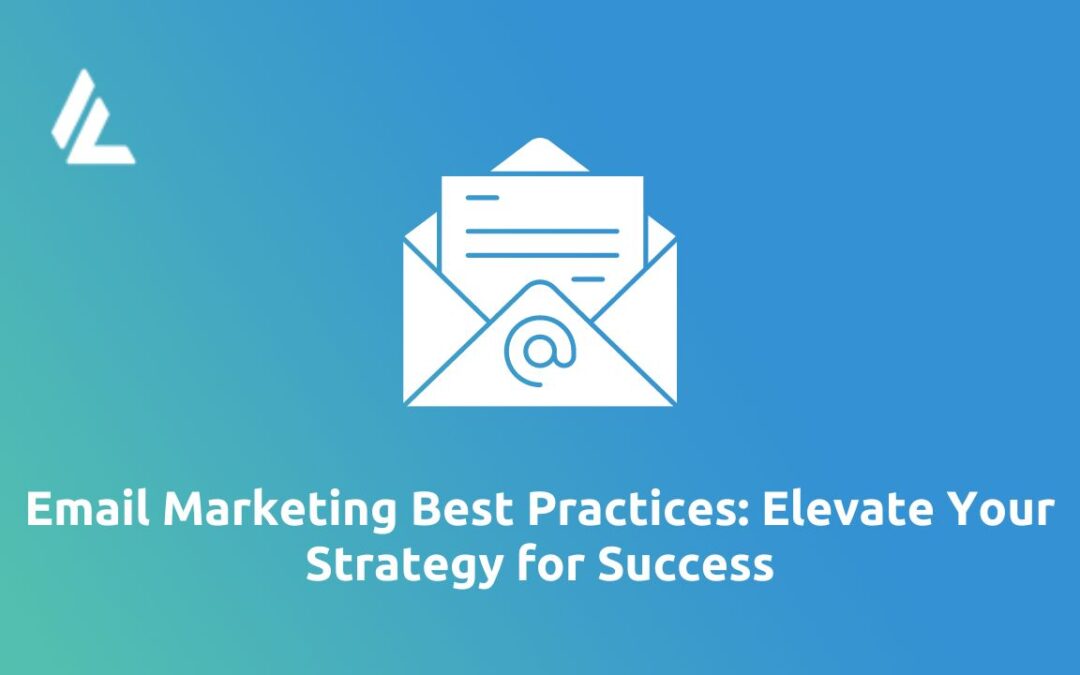Table of Contents
In today’s digital age, email marketing continues to be a powerful tool for businesses to connect with their audience, drive engagement, and boost conversions. However, to make the most of this marketing channel, it’s crucial to follow the email marketing best practices that ensure your emails stand out and deliver results. As we navigate this crowded online space, the challenge lies not just in getting your message across, but in ensuring it resonates deeply enough to spark action. This is where the art and science of email marketing converge. By adhering to proven email marketing best practices, you can craft messages that transcend the boundaries of the inbox, capturing the reader’s attention with compelling subject lines, fostering their interest with relevant content, and guiding them towards decisive actions through strategic calls-to-action (CTAs).
In a world where every click is a decision and every action is a vote of confidence, these best practices serve as a compass, steering your campaigns away from the abyss of spam folders and towards the fertile lands of engaged subscribers. By employing segmentation and personalization, your emails become more than messages – they become personalized experiences that cater to the individual needs, preferences, and behaviors of your audience.
In this guide, we’ll delve into effective email marketing practices, strategies, tips, and the role of newsletter marketing to help you create impactful campaigns.
Understanding Email Marketing Best Practices
Email marketing best practices encompass a comprehensive set of guidelines and strategic approaches that collectively serve as the cornerstone of a successful email campaign. These practices are like the threads that weave together the fabric of engaging, effective, and conversion-driven emails. By meticulously adhering to and implementing these practices, you have the potential to not only improve your open rates, click-through rates (CTRs), and overall engagement but also establish a lasting connection with your subscribers.
The art of crafting exceptional email campaigns involves considering a range of elements, each contributing to the synergy that compels recipients to interact with your emails. Here are some key points to consider:
- Segmentation and Personalization: Dividing your email list into distinct segments based on factors such as demographics, purchase history, or engagement levels allows you to send targeted messages tailored to specific audience groups. By personalizing content to address individual preferences and needs, you create a sense of relevance that resonates with recipients. This personal touch can lead to higher open rates and engagement, as subscribers are more likely to interact with content that feels tailored to their interests. The segmentation can be based on a lot of criterion such as demographic, behavioral, purchase history, company life cycle, etc.
Segmentation and personalization are the keystones of effective email marketing in the modern landscape. By recognizing and responding to the diversity within your audience, you create a dynamic and impactful email campaign strategy. This tailored approach, combined with other email marketing best practices, has the potential to elevate your open rates, click-through rates, and overall engagement, setting the stage for deeper connections, higher conversions, and a thriving email marketing ecosystem.
- Compelling Subject Lines: Subject lines serve as the gateway to your emails. A well-crafted subject line not only entices recipients to open the email but also sets the tone for the content within. By striking a balance between curiosity, relevance, and clarity, you can prompt recipients to take the crucial step of engaging with your message. An engaging subject line not only increases open rates but also contributes to improved CTRs as more recipients delve into the email’s content.
A subject line’s role in email marketing cannot be overstated. Crafting subject lines that are clear, intriguing, and aligned with the email’s content can significantly impact open rates. By understanding your audience, testing different approaches, and embracing the delicate balance between curiosity and transparency, you can create subject lines that not only get your emails opened but also set the stage for meaningful engagement and interactions. Remember, your subject line is your first impression; make it compelling and unforgettable.
- Quality Content: The content of your email is the core of your message. Providing valuable, informative, and engaging content establishes your brand as a reliable source of information and solutions. Whether it’s educational articles, product showcases, or exclusive offers, the content should be crafted with the recipient’s needs in mind. High-quality content fosters trust and positions you as an authority in your industry, leading to improved engagement and a higher likelihood of conversions.
The content within your email is the bridge that connects your brand’s offerings with the recipient’s aspirations. It’s a conduit through which value is exchanged, trust is built, and relationships are nurtured. By consistently providing valuable, informative, and engaging content that addresses your audience’s needs, you position your brand as a guiding light, leading recipients toward solutions and empowering them to make informed decisions. Remember, the content of your email is not just a message; it’s an opportunity to make a lasting impact.
- Mobile-Friendly Design: With a majority of users checking emails on mobile devices, responsive design is non-negotiable. Ensure your emails are visually appealing and easy to navigate on various screen sizes. The ubiquity of mobile devices demands that your emails are not only visually appealing on desktops but also optimized for various screen sizes. Responsive design ensures that your emails adapt seamlessly to smartphones and tablets, providing recipients with a comfortable viewing experience. Mobile-friendly design is more than just aesthetics; it’s a critical aspect that can impact both engagement and conversion rates.
Responsive design is not just a design trend; it’s a strategic imperative. With mobile devices shaping the way we engage with content, ensuring that your emails are visually appealing, easy to navigate, and perform well on varying devices is paramount. By embracing responsive design, you’re not just adapting to the present; you’re investing in the future, where mobile devices continue to dominate the digital landscape. Remember, the design of your email should not be a barrier; it should be a bridge that connects your message with your audience seamlessly, wherever they are.

Mastering Email Marketing Strategy
To excel in email marketing, having a solid strategy is essential. Here’s a step-by-step approach to crafting an effective email marketing strategy:
1. Define Your Goals:
Determine what you aim to achieve with your email campaigns. Whether it’s driving sales, increasing website traffic, or nurturing leads, clarity on goals is crucial. The essence of email marketing success lies in aligning your efforts with specific goals that propel your brand forward.
Defining your email marketing goals is not just a preliminary step; it’s the cornerstone of a well-crafted strategy. Goals provide direction, purpose, and the metrics against which you measure success. Every email you send becomes a tactical move toward achieving these goals, ensuring that your efforts are aligned with tangible outcomes.
2. Build a Quality Email List:
Focus on growing an organic and engaged subscriber list, for it forms the bedrock of a successful email marketing strategy. The journey to building a strong and valuable email list is one of patience, authenticity, and trust. While it might be tempting to seek shortcuts through purchasing email lists, it’s essential to recognize the potential pitfalls that can arise from such practices.
Purchasing email lists might promise a quick influx of contacts, but the reality is far from the surface allure. These lists often consist of individuals who haven’t opted to receive communications from your brand, leading to high unsubscribe rates and even potential spam complaints. Conversely, an organically grown list is nurtured through genuine interactions and voluntary sign-ups. These subscribers have shown interest in your brand, products, or content, making them more receptive to your emails. They are more likely to open, engage with, and convert from your emails, contributing to higher open rates, click-through rates, and overall campaign success.
3. Choose the Right Email Marketing Platform:
In the dynamic landscape of digital marketing, the platform you choose becomes the canvas upon which your email marketing masterpiece is painted. A comprehensive and strategic selection process can pave the way for campaigns that are not only effective but also streamlined and data-driven. The platform that you choose could include the following features- tailor made features for your needs, ease of use and user interface, future scalability options, automation capabilities and analytical and reporting facilities, with good customer support.
Choosing the right Email Marketing Platform is a strategic decision that influences the effectiveness and efficiency of your campaigns. By aligning your requirements with a platform that offers the right combination of features, usability, scalability, and support, you’re setting the stage for email campaigns that are not only impactful but also sustainable. Remember, the platform you choose should be more than just a tool; it should be a catalyst that propels your email marketing endeavors to new heights.
4. Implement Newsletter Marketing:
Newsletter marketing involves sending regular updates, news, and insights to your subscribers. Newsletters can help you build and maintain a strong relationship with your audience. A successful newsletter campaign is not just about disseminating information; it’s about cultivating engagement, nurturing loyalty, and building a community. Here are some tips for effective newsletter marketing:
- Craft Engaging Content: Share valuable content, industry insights, and company news to keep subscribers informed and engaged. A newsletter is a treasure trove of content that your subscribers eagerly await. Fill it with a mix of valuable resources, such as educational articles, industry insights, how-to guides, and thought-provoking stories. Strive for diversity in your content to cater to different interests within your audience.
- Consistent Schedule: Set a consistent sending schedule to establish a routine with your subscribers. Whether it’s weekly, bi-weekly, or monthly, reliability matters. Predictability not only keeps your brand on their radar but also fosters a sense of anticipation and expectation.

5. Leverage Email Marketing Tips:
Email marketing tips can provide that extra edge to your campaigns. Consider the following suggestions:
- A/B Testing: Experimentation is key to improvement. Conduct A/B tests by sending variations of your emails to different segments of your audience. Test elements such as subject lines, sender names, content layout, and CTAs to determine what resonates best and yields higher open and click-through rates. Experiment with different elements like subject lines, content, and calls-to-action (CTAs) through A/B testing to identify what resonates best with your audience.
Checkout our detailed guide for A/B testing for digital marketing campaigns for more in depth information.
- Optimize for Conversions: Ensure your emails have clear and compelling CTAs that guide readers to take desired actions.The call to action is the pivotal moment of decision in your email narrative. Crafting CTAs that are clear, compelling, and aligned with the recipient’s needs can transform a passive interaction into an active engagement. By strategically guiding readers toward desired actions, you’re not just creating conversions; you’re orchestrating a series of steps that lead recipients from curiosity to commitment. Remember, your CTAs are the guiding stars that navigate your recipients toward the destination you’ve set—a destination of value, engagement, and conversions.
6. Monitor, Analyze, and Iterate:
Regularly monitoring the metrics of your email campaigns is akin to steering a ship using a compass—it guides you toward your intended destination with precision. In the ever-evolving landscape of digital marketing, data is your compass, and the metrics you track provide the coordinates that guide your strategies. By immersing yourself in the insights gleaned from open rates, click-through rates (CTRs), and conversion rates, you’re not just observing; you’re actively fine-tuning your approach for greater impact.
Here’s a comprehensive exploration of the strategies that can elevate your data-driven decision-making process:
- Open Rates: Open rates offer a window into the intrigue and appeal of your subject lines and pre-header text. A consistently low open rate might indicate that your subject lines need refinement or that your emails aren’t standing out in crowded inboxes. Analyze trends over time and experiment with variations to find what resonates best with your audience.
- Click-Through Rates (CTRs): Click-through rates are the signposts of engagement, guiding you toward the content that truly captures your audience’s interest. A higher CTR signifies that your email’s content and CTAs are compelling and effectively guiding recipients toward desired actions. Low CTRs may indicate that your content needs to be more relevant, engaging, or your CTAs need to be more persuasive.
- Conversion Rates: Conversion rates are the North Star that guide your ultimate goal—whether it’s making a purchase, signing up for a webinar, or downloading a resource. Monitoring conversion rates provides insights into the effectiveness of your email content, design, and calls to action. Improving conversion rates often involves a holistic approach, where everything from the email’s message to the landing page it leads to plays a role.
- Segmentation Analysis: Analyzing the performance of different segments within your audience can offer valuable insights. Are certain segments consistently more engaged? Are there segments that require tailored content to improve their engagement? Segment-specific analysis helps you refine your targeting and tailor your messaging for maximum impact.
Conclusion
In the dynamic realm of digital marketing, email marketing stands tall as an enduring pillar that bridges the gap between brands and their audiences. It’s a direct conduit through which personalized, relevant, and valuable content can be delivered right to the fingertips of your subscribers. By embracing the email marketing best practices outlined in this guide and weaving in effective strategies like newsletter marketing and email marketing tips, you’re not just crafting emails; you’re sculpting experiences that resonate, inspire, and convert.
Email marketing is not just a tool in your marketing arsenal; it’s a dynamic force that forges connections, influences decisions, and shapes brand perceptions. By weaving together the strategies, insights, and best practices outlined in this guide, you’re orchestrating a symphony of engagement that resonates with your audience and drives your business forward. Remember, your emails are not just messages; they’re invitations to journey together—into knowledge, solutions, and ultimately, lasting relationships. As you craft each email, remember that you’re not just marketing; you’re fostering connections that transcend the digital divide.
Embark on a transformative journey with IndoAge’s digital marketing agency and unlock the full potential of your brand in the ever-evolving digital landscape. Our expert team is poised to supercharge your online presence, revolutionize your strategies, and propel your business to new heights of success.
Take the first step toward marketing excellence – partner with IndoAge, the experts and unleash your brand’s true potential.”

